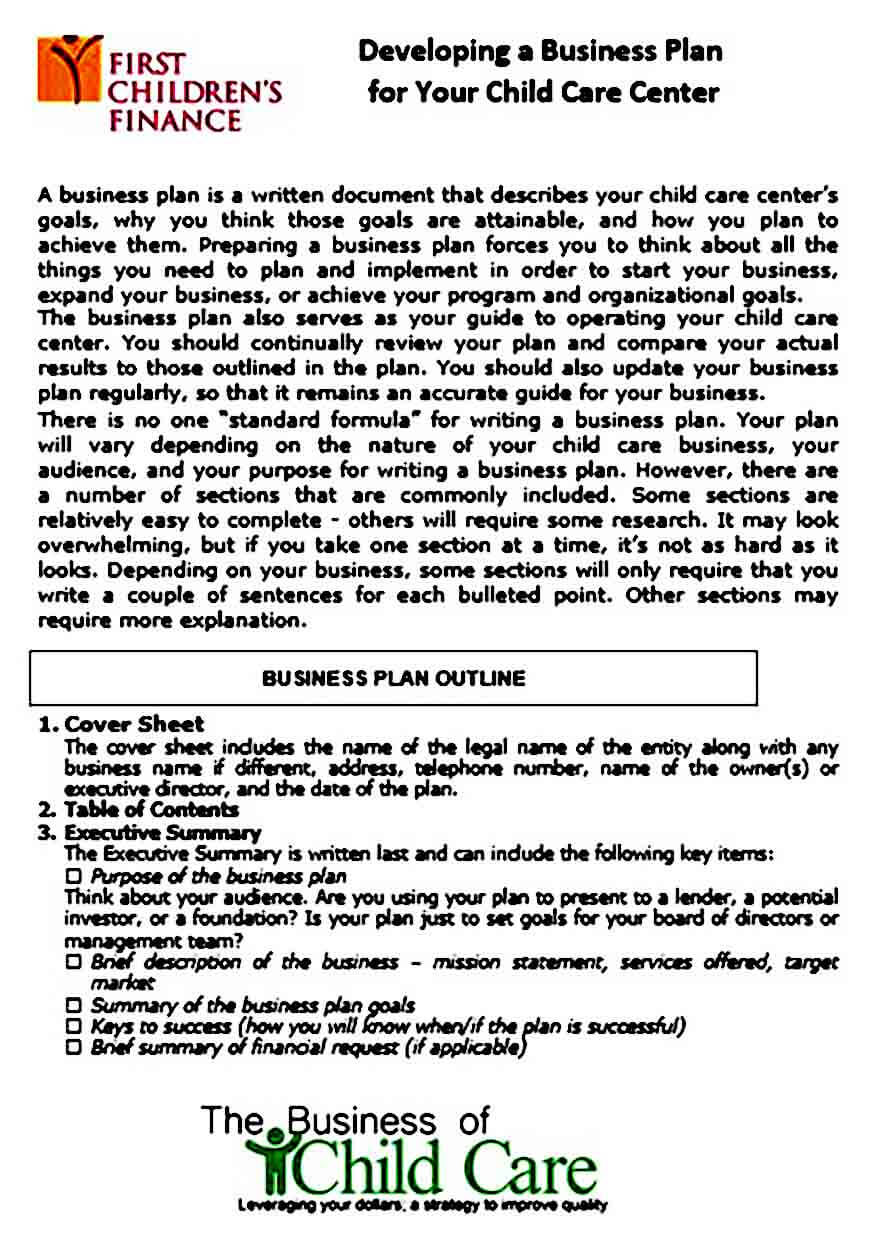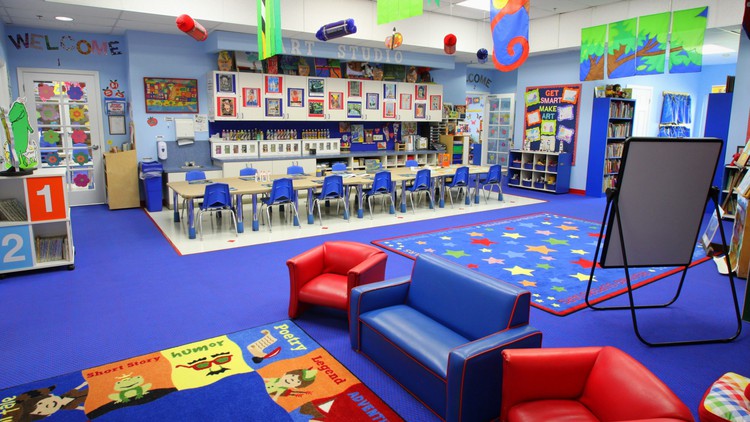Why Opening a Daycare Can Be a Rewarding Venture
Opening up your own daycare can be a highly rewarding experience, offering a unique opportunity to make a positive impact on the lives of children and their families. By providing a safe, nurturing, and educational environment, daycare owners can play a vital role in shaping the minds and characters of future generations. Moreover, running a daycare can offer a sense of personal fulfillment and satisfaction, as owners witness the growth and development of the children in their care.
In addition to the emotional rewards, opening a daycare can also provide a sense of flexibility and autonomy. As a business owner, you have the freedom to create a schedule that suits your needs and lifestyle, allowing you to balance work and family responsibilities. Furthermore, a well-run daycare can be a financially stable venture, providing a steady income stream and opportunities for growth and expansion.
Many people are drawn to the idea of opening a daycare because of the potential to create a positive and lasting impact on their community. By providing high-quality childcare, daycare owners can help support working families and contribute to the overall well-being of their neighborhood. Additionally, a daycare can serve as a hub for community activity, hosting events and workshops that bring people together and foster a sense of connection and belonging.
Of course, opening a daycare requires careful planning, hard work, and dedication. However, for those who are passionate about working with children and committed to providing exceptional care, the rewards can be immense. Whether you’re looking to start a small, home-based daycare or a larger, center-based operation, the key to success lies in creating a warm, welcoming, and supportive environment that meets the unique needs of each child and family.
By opening up your own daycare, you can create a business that not only generates income but also brings joy and fulfillment to your life. With the right mindset, skills, and support, you can build a thriving daycare that makes a real difference in the lives of those you serve.
How to Create a Safe and Nurturing Environment for Children
When opening up your own daycare, creating a safe and welcoming space for children is crucial for their physical, emotional, and cognitive development. A well-designed environment can help children feel secure, stimulate their curiosity, and foster a sense of belonging. To achieve this, consider the following tips for designing a safe and nurturing environment:
First, ensure that the physical space is safe and free from hazards. This includes installing safety gates, securing heavy furniture and appliances, and storing toxic substances out of reach. Additionally, consider the layout of the space, ensuring that it is easy to navigate and provides ample opportunities for children to move around and engage in physical activity.
Next, think about the equipment and materials you will need to provide a stimulating and engaging environment. This may include toys, books, art supplies, and educational materials that cater to different age groups and abilities. Consider investing in high-quality, durable equipment that can withstand heavy use and is easy to clean and maintain.
Staffing is also a critical component of creating a safe and nurturing environment. Ensure that you hire qualified and experienced staff who are passionate about working with children. Provide ongoing training and support to help staff develop their skills and knowledge, and encourage a culture of open communication and collaboration.
Another important consideration is the ratio of staff to children. Ensure that you have sufficient staff to provide individualized attention and care to each child, and that staff are not overwhelmed by the number of children in their care. This will help to create a sense of calm and stability, and reduce the risk of accidents and injuries.
Finally, consider the importance of creating a sense of community and belonging in your daycare. This can be achieved by encouraging parent involvement, hosting events and activities that bring families together, and fostering a sense of connection and cooperation among staff and children. By creating a warm and welcoming environment, you can help children feel valued, respected, and supported, and provide a strong foundation for their future success.
By following these tips, you can create a safe and nurturing environment that meets the unique needs of each child and family, and sets your daycare up for success. Remember, the key to creating a thriving daycare is to prioritize the needs and well-being of the children in your care, and to provide a supportive and stimulating environment that fosters their growth and development.
Understanding Licensing and Regulatory Requirements
When opening up your own daycare, it’s essential to understand the licensing and regulatory requirements that govern the childcare industry. These requirements vary by state and locality, but they are designed to ensure that daycare providers meet minimum standards for health, safety, and quality of care.
In the United States, daycare licensing is typically handled by state and local governments. Each state has its own set of regulations and requirements for daycare providers, including minimum staffing ratios, health and safety standards, and educational requirements for staff. Some states also require daycare providers to undergo background checks and provide proof of liability insurance.
To obtain a daycare license, providers typically must submit an application and pay a fee. The application process may involve a site visit from a state or local inspector, who will assess the daycare’s compliance with regulatory requirements. Providers may also be required to complete a training program or orientation to learn about state and local regulations.
In addition to state and local regulations, daycare providers must also comply with federal regulations, such as those related to health and safety, nutrition, and education. For example, the Child Care and Development Block Grant (CCDBG) Act requires daycare providers to meet certain standards for health and safety, including providing a safe sleep environment for infants and toddlers.
It’s also important to note that some states have additional regulations or certifications for specialized types of daycare, such as infant care or special needs care. Providers should research the specific regulations and requirements for their state and locality to ensure compliance.
Obtaining the necessary licenses and certifications can be a complex and time-consuming process, but it’s essential for ensuring the health, safety, and well-being of the children in your care. By understanding the licensing and regulatory requirements for your state and locality, you can create a high-quality daycare program that meets the needs of families and children.
Some resources to help you navigate the licensing and regulatory process include:
State and local government websites, which often provide information on licensing requirements and regulations
The National Association for the Education of Young Children (NAEYC), which offers resources and guidance on accreditation and quality improvement
The Child Care and Development Fund (CCDF), which provides information on federal regulations and funding opportunities for daycare providers
Developing a Business Plan for Your Daycare
When opening up your own daycare, creating a comprehensive business plan is essential for success. A well-written business plan will help you define your goals, identify your target market, and develop a strategy for achieving financial stability. In this section, we will provide guidance on creating a business plan that meets the unique needs of your daycare.
Market Research: The first step in creating a business plan is to conduct market research. This involves gathering data on the demand for daycare services in your area, as well as the competition. You can use online resources, such as the U.S. Census Bureau, to gather demographic data on the population in your area. You can also conduct surveys or focus groups to gather information on the needs and preferences of potential customers.
Defining Your Target Market: Once you have gathered data on the demand for daycare services, you can define your target market. This involves identifying the specific age range and demographic characteristics of the children you will serve. For example, you may decide to specialize in infant care or provide services for children with special needs.
Developing a Budget: The next step in creating a business plan is to develop a budget. This involves estimating your startup costs, as well as your ongoing expenses. You will need to consider the cost of renting or purchasing a facility, hiring staff, and purchasing equipment and supplies. You will also need to estimate your revenue, based on the number of children you plan to serve and the fees you will charge.
Marketing Strategies: Once you have developed a budget, you can create a marketing plan. This involves identifying the strategies you will use to attract customers and promote your daycare. You may decide to use online marketing, such as social media or search engine optimization, or traditional marketing methods, such as print advertising or direct mail.
Operations Plan: The final step in creating a business plan is to develop an operations plan. This involves outlining the day-to-day activities of your daycare, including the hours of operation, staffing ratios, and policies for health and safety. You will also need to develop a plan for managing finances, including budgeting, accounting, and record-keeping.
By following these steps, you can create a comprehensive business plan that will help you achieve success in the daycare industry. Remember to review and update your plan regularly, as your business grows and changes.
Staffing and Training: Building a Qualified Team
When opening up your own daycare, hiring qualified staff is crucial for providing high-quality care for children. A well-trained and experienced team can make all the difference in creating a safe and nurturing environment that supports the physical, emotional, and cognitive development of children.
To build a qualified team, start by defining the roles and responsibilities of each staff member. This may include lead teachers, assistant teachers, and support staff such as cooks and janitors. Consider the qualifications and experience required for each role, as well as the skills and personality traits that are essential for working with children.
When recruiting staff, look for individuals who are passionate about working with children and have a strong understanding of child development principles. Consider candidates with early childhood education degrees or certifications, as well as those with experience working in daycare settings.
Once you have hired your staff, provide ongoing training and support to ensure they have the skills and knowledge needed to provide high-quality care. This may include training on topics such as child development, health and safety, and communication with parents. Consider partnering with local colleges or universities to provide staff with access to continuing education opportunities.
In addition to formal training, provide staff with opportunities for professional development and growth. This may include mentoring programs, coaching, and feedback sessions. Encourage staff to share their ideas and suggestions for improving the daycare program, and provide recognition and rewards for outstanding performance.
Staff morale is also critical for maintaining a positive and productive work environment. Consider strategies for boosting morale, such as team-building activities, recognition programs, and opportunities for staff to provide input on decision-making processes.
By building a qualified and dedicated team, you can create a daycare program that is truly exceptional. Remember to prioritize staff training and development, and provide ongoing support and recognition to ensure your team is equipped to provide the best possible care for children.
Managing Finances and Operations
When opening up your own daycare, managing finances and operations is crucial for ensuring the long-term success of your business. A well-managed daycare can provide a safe and nurturing environment for children, while also generating a profit for the owner. In this section, we will provide guidance on managing the financial and operational aspects of a daycare.
Budgeting: Creating a budget is essential for managing the finances of a daycare. A budget should include projected income and expenses, as well as a plan for managing cash flow. Consider using a budgeting software or consulting with a financial advisor to help create a comprehensive budget.
Accounting: Accurate accounting is critical for managing the finances of a daycare. Consider using an accounting software or hiring a bookkeeper to help manage financial records. This will help ensure that financial statements are accurate and up-to-date.
Record-Keeping: Record-keeping is essential for managing the operations of a daycare. Consider using a record-keeping software or creating a manual system for tracking important documents, such as attendance records, health records, and staff personnel files.
Staff Management: Managing staff is critical for ensuring the smooth operation of a daycare. Consider using a staff management software or creating a manual system for tracking staff schedules, attendance, and performance.
Facility Management: Managing the facility is essential for ensuring the health and safety of children. Consider using a facility management software or creating a manual system for tracking maintenance, repairs, and cleaning schedules.
Insurance: Insurance is critical for protecting the assets of a daycare. Consider purchasing liability insurance, property insurance, and workers’ compensation insurance to protect against potential risks.
Tax Planning: Tax planning is essential for minimizing the tax liability of a daycare. Consider consulting with a tax professional to help create a tax plan that minimizes tax liability and maximizes profitability.
By following these tips, you can effectively manage the finances and operations of your daycare, ensuring a safe and nurturing environment for children, while also generating a profit for the owner.
Marketing Your Daycare to Attract Families
When opening up your own daycare, marketing is crucial for attracting families and filling your program to capacity. A well-planned marketing strategy can help you reach your target audience, build your brand, and establish your daycare as a trusted and reputable provider of childcare services.
Online Presence: In today’s digital age, having a strong online presence is essential for marketing your daycare. Consider creating a website that showcases your program’s mission, values, and services. Use search engine optimization (SEO) techniques to ensure that your website appears at the top of search engine results pages (SERPs) for relevant keywords.
Social Media: Social media is a powerful tool for marketing your daycare and engaging with potential customers. Consider creating profiles on popular social media platforms such as Facebook, Twitter, and Instagram. Use these platforms to share updates about your program, post photos and videos, and respond to comments and messages.
Community Outreach: Community outreach is an effective way to market your daycare and build relationships with local families. Consider partnering with local businesses, schools, and community organizations to promote your program. Attend local events, such as farmers’ markets and street fairs, to showcase your program and meet potential customers.
Referral Marketing: Referral marketing is a powerful tool for marketing your daycare and attracting new customers. Consider offering incentives to current customers who refer their friends and family to your program. Use word-of-mouth marketing to build your reputation and attract new customers.
Print Marketing: Print marketing is still an effective way to market your daycare and reach potential customers. Consider creating brochures, flyers, and business cards that showcase your program’s services and benefits. Use these materials to promote your program at local events and in your community.
By using these marketing strategies, you can effectively promote your daycare and attract new customers. Remember to always keep your target audience in mind and tailor your marketing efforts to meet their needs and preferences.
Overcoming Common Challenges in Daycare Ownership
Opening up your own daycare can be a rewarding venture, but it also comes with its own set of challenges. As a daycare owner, you may face obstacles such as managing stress, maintaining staff morale, and addressing parent concerns. In this section, we will discuss common challenges faced by daycare owners and provide guidance on overcoming them.
Managing Stress: Managing stress is essential for maintaining a healthy and productive work environment. Consider implementing stress-reducing strategies such as meditation, exercise, or deep breathing exercises. Encourage your staff to take breaks and prioritize self-care to reduce burnout.
Maintaining Staff Morale: Maintaining staff morale is crucial for ensuring high-quality care for children. Consider implementing staff recognition programs, providing opportunities for professional development, and fostering a positive work environment. Encourage open communication and provide feedback to help staff feel valued and supported.
Addressing Parent Concerns: Addressing parent concerns is essential for maintaining a positive relationship with families. Consider implementing an open-door policy, where parents can come to you with concerns or questions. Provide regular updates on their child’s progress and encourage feedback to ensure that parents feel informed and involved.
Managing Finances: Managing finances is a common challenge faced by daycare owners. Consider implementing a budgeting system, tracking expenses, and providing regular financial reports to ensure that your daycare is financially stable.
Compliance with Regulations: Compliance with regulations is essential for maintaining a safe and healthy environment for children. Consider implementing a system for tracking and maintaining compliance with state and local regulations, and provide regular training for staff on regulatory requirements.
By overcoming these common challenges, you can ensure that your daycare provides high-quality care for children and maintains a positive reputation in the community. Remember to prioritize self-care, staff morale, and parent communication to ensure a successful and sustainable daycare business.







